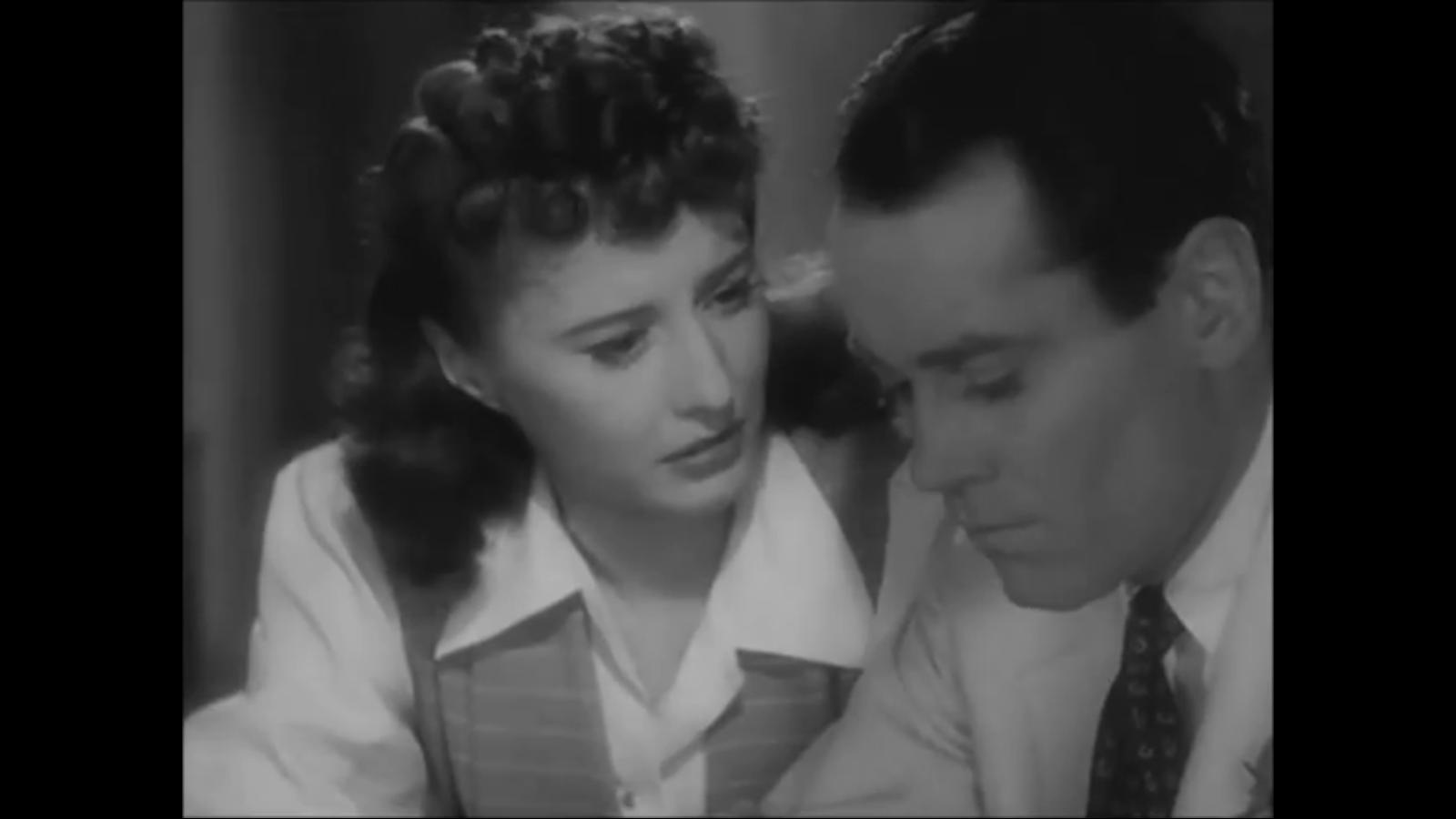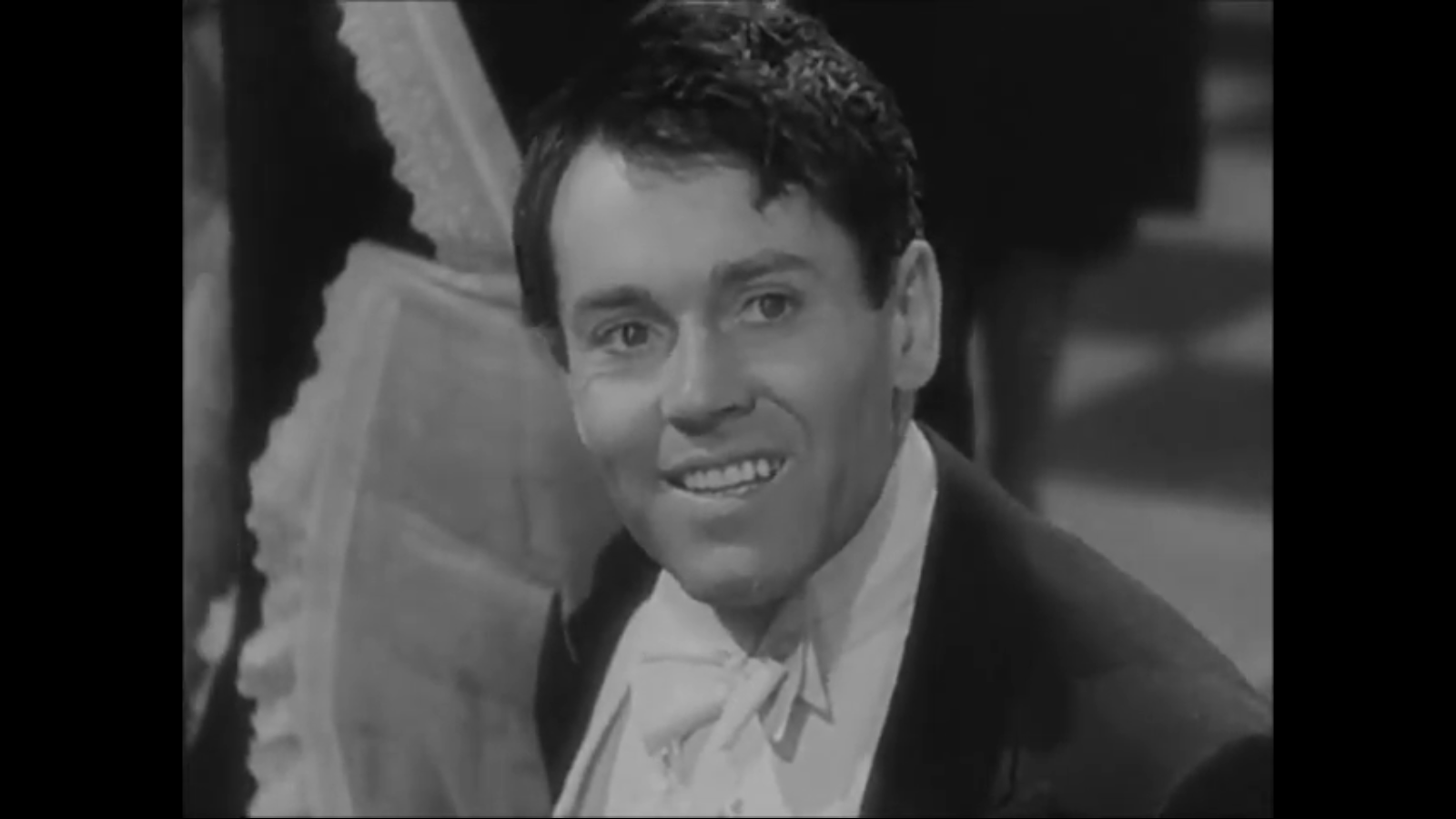Lady Eve, The (1941)
“I need him like the axe needs the turkey.”
|
Synopsis: |
|
Genres, Themes, Actors, and Directors:
Response to Peary’s Review: What’s most memorable about The Lady Eve, however, are the performances by the odd-couple leads — both at the top of their game. Peary accurately notes that Fonda (never the most exciting of actors) “will surprise you with his skillful pratfalls” (they’re numerous, and all exceedingly well-done), and argues that “Stanwyck is so personable and vivacious that you feel… all the men whose money she stole got their money’s worth”. Peary names Stanwyck Best Actress of the Year in his Alternate Oscars book for 1941, though he ultimately selects her performance in Ball of Fire over this one simply because he “likes her character better” in that film; but he rightfully argues that she’s “flawless in both comedies”. Her complex character here undergoes a tremendous character arc, allowing herself to unexpectedly fall in love, then reverting to wily cynicism when her heart is broken, and magically transforming into a glamorous, seductive, yet hilarious noblewoman who convincingly has dozens of men literally drooling at her feet. She bats not an eye when silently daring Fonda to doubt the veracity of her outrageous assumed persona — yet we can easily see both her vulnerability and her scorned-woman wrath hovering close beneath the surface. Peary culminates his brief review of The Lady Eve by arguing that the “film would match Sullivan’s Travels” — which he nominates as Best Picture of the Year in his Alternate Oscars — “if it didn’t peter out near the end”; however, I’m actually a bigger fan of this title, made the same year. I disagree completely that the film’s ending (reminiscent, in a way, of the denouement to Billy Wilder’s The Major and the Minor) is a cop-out; as Ebert puts it in his “Greatest Films” review, the final two lines are “equal to the classic line ‘Nobody’s perfect!” at the end of Some Like It Hot.” A final kudos should be given to Edith Head and her minions for a set of marvelous outfits; Stanwyck has never looked more enticing. As Peary puts it, “cheers to her wardrobe designer”. Redeeming Qualities and Moments:
Must See? Categories
(Listed in 1001 Movies You Must See Before You Die) Links: |




One thought on “Lady Eve, The (1941)”
A once-must, mainly for Stanwyck’s masterful, freewheeling performance.
There’s quite a bit to enjoy in this Sturges film – even though it’s not one of his that I feel drawn to return to. I’ve really only seen it through about three times, I think – which is perhaps not so odd for me; I’ve seen ‘Sullivan’s Travels’ quite a few times, and that probably remains my favorite among Sturges’ work as writer/director.
Here’s my main difficulty with ‘The Lady Eve’: the assessment reference to ‘Bringing Up Baby’ – one of my favorite comic romances – is spot-on and ‘TLE’ owes quite a bit to ‘BUB’, esp. in terms of the leads. In both films, the male lead is some unusual kind of “~ologist” and the dominant female lead (in a charmingly ‘predatory’ manner) will do anything – anything! – to get the man she feels fate has reserved just for her. Sturges serves up his own unique riff on the premise and certainly has the wit to keep things crisp and entertaining. (~which paid off for him – literally; he got himself a solid commercial hit as a result.) However, whereas in ‘BUB’ I do get the idea that Grant and Hepburn are made and meant for each other, I don’t come away from ‘The Lady Eve’ feeling remotely the same way. I leave the film wondering what Stanwyck sees in Fonda – so, although I admire much in the film (in particular, its sparkling dialogue), I come away from ‘TLE’ rather unsatisfied overall.
Because Stanwyck and Fonda aren’t ultimately the kind of mismatched ‘equals’ that Grant and Hepburn are, there’s less room for growth in Fonda’s character – which is why, although Fonda does indeed do slapstick well, his Charles Pike is given more physical foil work; he can’t really keep up with Stanwyck verbally. In ‘BUB’, Grant is given delicious things to say (one of my faves being, “Now it isn’t that I don’t like you, Susan, because, after all, in moments of quiet, I’m strangely drawn toward you, but…well, there haven’t been any quiet moments.”). However, Fonda is given precious little that’s all that interesting to listen to; his character isn’t stupid, but he nevertheless comes off like more of a buffoon. Much more, actually. In ‘BUB’, Grant – while also being an absent-minded bookworm-type – still has the ability to see what’s behind Hepburn’s wackier antics. Fonda does not have the same ability; he remains rather clueless on his own throughout.
I suppose the main point that I’m pushing here is that, in ‘BUB’, I really want Grant and Hepburn to end up together because an audience can feel they have earned that as characters. (In a similar way, Joel McCrea and Veronica Lake take that same route in ‘Sullivan’s Travels’ – which, I’m sure, has much to do with why I prefer ‘ST’ to ‘TLE’.) At the end of ‘TLE’ (though I do think the last few minutes work well as a plot twist and are very clever), I don’t particularly care if Stanwyck and Fonda unite as a couple or not. To me, their relationship is a love story of convenience – because younger audiences can simply enjoy people falling in love on-screen for its own sake. I find it kind of tedious listening to Fonda say things like, “I’ve always loved you. I mean, I’ve never loved anyone but you.” (Huh? Based on what?) On the other hand, I’m more intrigued by Stanwyck when, early on, a response of hers gives us the film’s main theme: “Don’t you know it’s dangerous to trust people you don’t know very well?” Unfortunately for Fonda’s character, the ‘danger’ for him is much more physical than mental/emotional.
All that said, the film contains one of Stanwyck’s best performances. I particularly love her early monologue – in which she talks about (and speaks for, tho unnoticed by) Fonda, for our benefit; commenting on the various women trying to hit on Fonda in the dining room: “Holy smoke, the dropped kerchief! That hasn’t been used since Lily Langtry!” … “She recognizes you. She’s up, she’s down. She can’t make up her mind. She’s up again. She recognizes you. She’s coming over to speak to you. The suspense is killing me.” Stanwyck takes this film and runs with it. She’s a joy to watch, is stunning to look at and takes full advantage of every nuance Sturges’ script affords her.
(Among the supporting cast – who all seem to be having wonderful fun – I get particular enjoyment from Coburn and Blore. The latter’s ‘very British’ explanation to Fonda that Stanwyck could possibly have a twin sister is a real highlight for me: “I’m afraid you’ve stumbled on the sorrow of Sidwich, the secret of the century. …~there was a coachman on the estate, a gay dog, a great hand with the horses *and* the ladies, need I say more? … We must close our minds to [the fact that the sisters look alike], as it brings up the dreadful and thoroughly unfounded suspicion that we must carry to our tombs, as it is utterly untenable that the coachman, in both instances…need I say more?”)